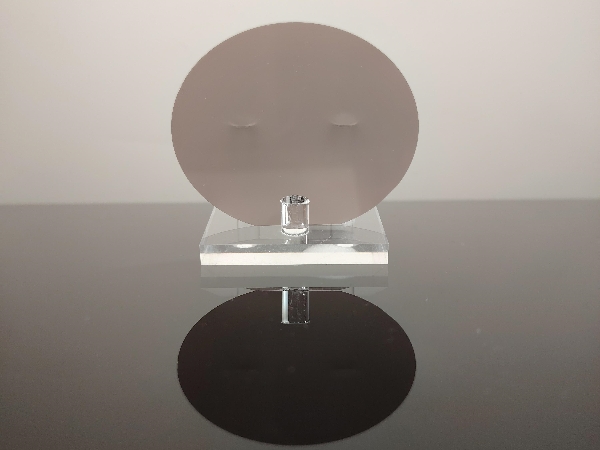
In modern optoelectronic and microelectronic technologies, Lithium Tantalate (LiTaO₃, LT) and Lithium Niobate (LiNbO₃, LN) are two essential nonlinear optical and piezoelectric materials widely used in lasers, optical communication, acoustic devices, and more. Although they belong to the same lithium-based tantalum-niobium oxide family, they exhibit distinct differences in performance and applications. This article provides an in-depth comparison of LT and LN, highlighting their unique properties and advantages in various fields.
Fundamental Properties of LT and LN
Both LT and LN belong to the trigonal crystal system (R3c) and exhibit excellent electro-optic, piezoelectric, and nonlinear optical properties. However, they differ in terms of electro-optic coefficients, thermal stability, and nonlinear optical coefficients.
| Property | LiTaO₃ (LT) | LiNbO₃ (LN) |
| Crystal Structure | Trigonal (R3c) | Trigonal (R3c) |
| Optical Transparency Range | 350 - 5000 nm | 400 - 5000 nm |
| Electro-optic Coefficient (r₃₃) | 20.8 pm/V | 30.9 pm/V (Higher) |
| Nonlinear Optical Coefficient (d₃₁) | 4.5 pm/V | 33 pm/V (Higher) |
| Dielectric Constant (ε₃₃/ε₀) | 51 | 85 |
| Piezoelectric Coupling Coefficient (k²) | Relatively lower | Relatively higher |
| Thermal Stability | Better, low temperature drift | Higher temperature sensitivity |
| Damage Threshold | Higher | Relatively lower |
From the table, it is evident that LN has superior electro-optic and nonlinear optical properties, while LT offers better thermal stability and a higher damage threshold. These differences make them suitable for distinct applications.
2. Key Applications of LT and LN
Due to their exceptional optical, electrical, and acoustic properties, LT and LN are widely used in various high-tech fields.
(1) Electro-optic and Nonlinear Optical Applications
Advantages of LN:
Electro-optic Modulators (EOMs): With a high electro-optic coefficient (r₃₃ = 30.9 pm/V), LN is preferred for high-speed optical communication systems.
Laser Frequency Doubling (Second Harmonic Generation, SHG): LN’s strong nonlinear optical coefficient makes it ideal for frequency doubling of 1064 nm Nd:YAG lasers.
Advantages of LT:
Q-switching for Lasers: LT’s higher damage threshold makes it suitable for Q-switching in high-power laser systems, ensuring better system stability.
Optical Storage: LT exhibits strong photorefractive effects, making it a promising candidate for holographic data storage.
(2) Acoustic and Microwave Devices
Advantages of LN:
Surface Acoustic Wave (SAW) Filters: With superior piezoelectric coupling, LN is widely used in SAW filters for mobile communication and RF receivers.
Ultrasound Sensors: LN’s higher piezoelectric response makes it ideal for high-sensitivity ultrasonic transducers.
Advantages of LT:
Highly Stable SAW Filters: Due to its lower temperature coefficient, LT is preferred in SAW devices that require thermal stability, such as precision oscillators.
High-Temperature Acoustic Devices: LT’s enhanced thermal stability makes it a better choice for acoustic applications in extreme environments.
(3) Infrared and Detection Applications
Both LN and LT exhibit mid-infrared (IR) transparency, making them suitable for infrared detectors, thermal imaging devices, and optical sensors.
LT’s superior thermal stability makes it particularly well-suited for aerospace and military-grade IR optical windows.
3. How to Choose Between LT and LN?
When selecting a material for an optoelectronic or acoustic device, consider the following key factors:
✅ For applications requiring high electro-optic or nonlinear optical performance (e.g., optical modulators, frequency doubling) → Choose LiNbO₃ (LN).
✅ For applications demanding superior thermal stability or a higher damage threshold (e.g., high-temperature optical and acoustic devices) → Choose LiTaO₃ (LT).
✅ For SAW filters, LN provides better piezoelectric performance, while LT is preferable for temperature-sensitive environments.

4. Future Trends
With advancements in optoelectronic and microelectronic technologies, the applications of LT and LN continue to expand:
Next-generation optical communication: LN remains the leading material for high-speed optical modulation, while LT may gain traction in low-power optical devices.
Integrated photonics: Both LN and LT are evolving toward thin-film LN (TFLN) and thin-film LT (TFLT) for photonic integrated circuits (PICs).
Infrared and terahertz technologies: LT and LN are increasingly used in high-power infrared sources and terahertz wave detection.
5. Conclusion
Both LiTaO₃ (LT) and LiNbO₃ (LN) are highly promising electro-optic materials, each excelling in different areas. LN is renowned for its superior electro-optic and nonlinear optical properties, while LT offers better thermal stability and a higher damage threshold. As optoelectronic technologies continue to advance, LT and LN will remain key materials in the fields of optical modulation, acoustic filtering, laser frequency conversion, and infrared detection.
As semiconductor technology advances, Gallium Nitride (GaN) has become a core material in optoelectronics, rad...
With the rapid advancement of third-generation semiconductor technologies, Silicon Carbide (SiC) has emerged a...
As third-generation semiconductor materials such as silicon carbide (SiC) and gallium nitride (GaN) continue t...
